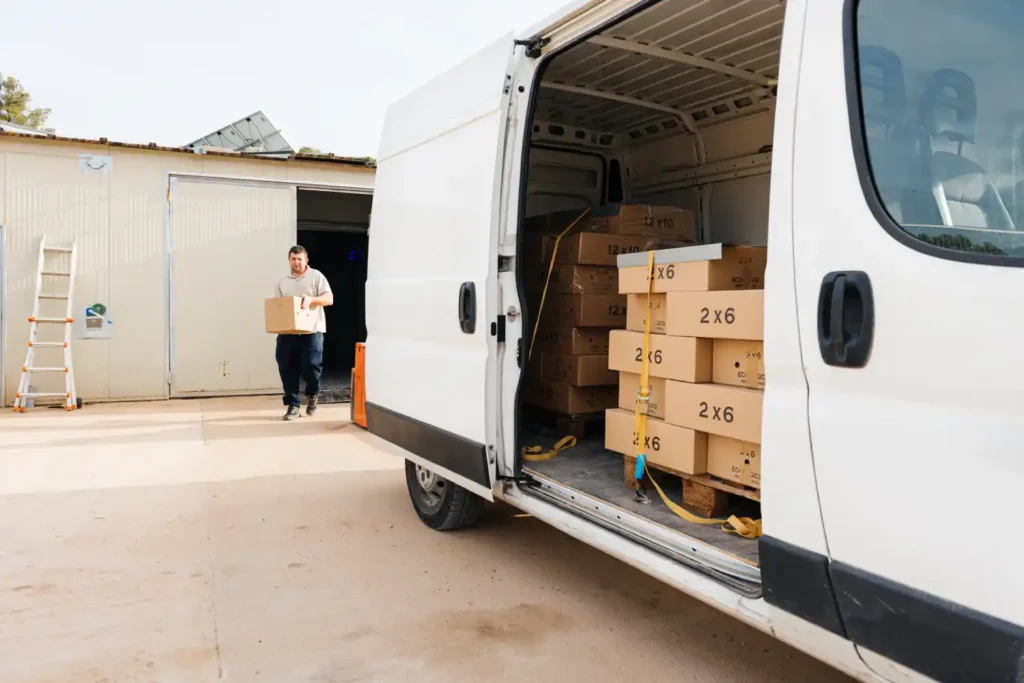
Securing the cargo in transit in a van is a key aspect that affects the safety and efficiency of the transport. Improperly secured cargo can lead to serious consequences such as fines, damage to goods or personal injury. Therefore, it is important to understand what means and rules are necessary to secure cargo to avoid these risks.
When loading, attention must be paid not only to the selection of suitable fastening devices, but also to the characteristics of the goods being transported. Each type of cargo requires a specific approach, with factors such as size, weight and sensitivity to external conditions playing a crucial role. Proper planning and implementation of cargo securing will ensure that the goods arrive at the consignee in an intact condition.
The Importance of Proper Cargo Security
Correct cargo security is a fundamental aspect of transport that affects not only the safety of goods but also the protection of people on the road. Improperly secured cargo can lead to serious consequences such as fines, damage to goods and personal injury. According to statistics, the majority of accidents caused by loose loads occur during hard braking or impacts, underlining the need for careful securing.
It is important to choose the right means of securing the load, taking into account the size, weight and sensitivity of the goods being transported. Almost every type of cargo requires a specific method of securing. For example, heavy items require strong straps and anchors, while fragile goods in turn deserve careful positioning and additional protective features.
When complying with cargo security rules, it is also important to keep in mind the technologies that can ensure safe transport. Modern systems, such as online fleet tracking, can monitor driver driving style and tyre pressure, increasing the level of safety. In this way, the risks associated with transporting cargo can be minimised, ensuring it is delivered in pristine condition.
Adherence to these basic principles of cargo security leads to more efficient and safer transport, while avoiding the undesirable consequences that can arise from insufficient attention to loading.
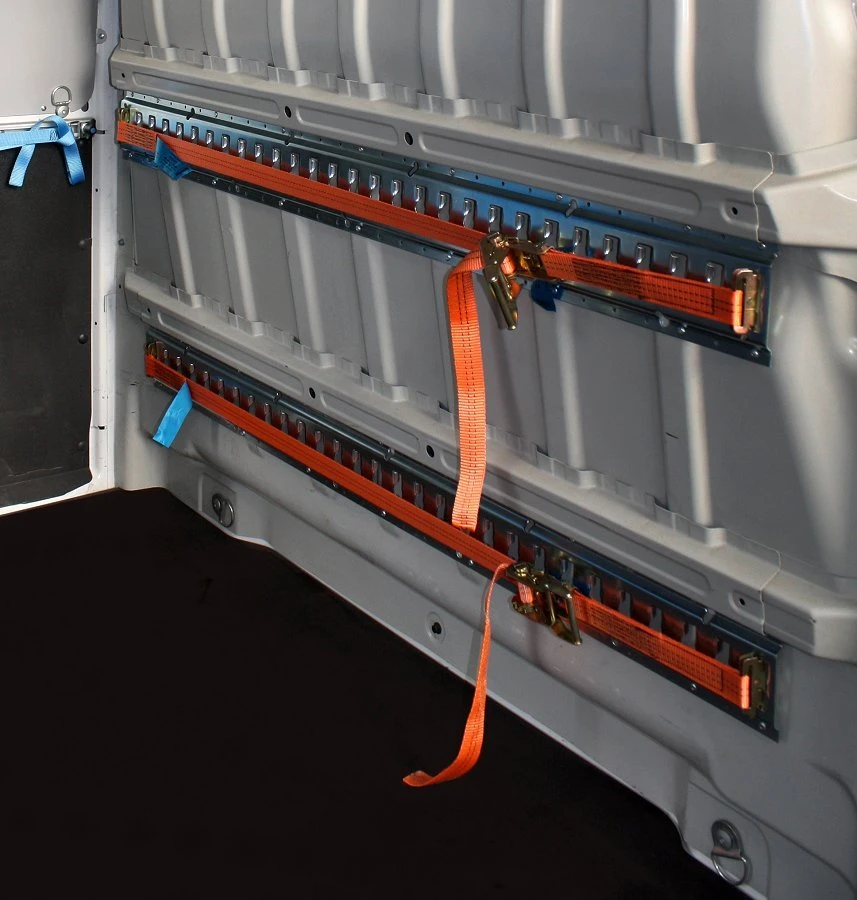
Cargo Security Devices
Correct cargo security when transported in a van depends on the selection and use of appropriate equipment. Appropriate equipment minimises the risk of damage to goods, personal injury and fines for improper securing.
Types of Devices
Load securing devices include various elements that help to keep goods in a stable position. The most common types include:
- Networks - They are used to secure loose goods in the van.
- Waterproof tarpaulins - They protect the cargo from external influences such as rain or snow.
- Load securing rail - Ensures the strength of the fasteners, thus increasing the stability of the transported objects.
- Fixing elements - They include container fixings and wedges to ensure heavy objects are fixed.
- Straps and ropes - They are also used for direct load securing. Plastic or steel ropes are suitable.
- Friction pads - They reduce the movement of the load through the abrasion and protect it from damage.
- Tensioning winches - They assist in tensioning the straps, providing increased stability.
- Edge protectors - They minimise the risk of damage to the load at the edges.
- Covering and filling material - Inflatable bags and other materials provide protection for fragile items during transport.
Selection of Administrative Facilities
When selecting cargo securement equipment, it is crucial to consider the characteristics of the goods being transported. Important factors include:
- Weight and dimension - Heavy objects require stronger fastenings such as straps and chains to prevent them from moving.
- Sensitivity of goods - Fragile products need full protection, including appropriate edge protectors and filling materials.
- Type of transport - Depending on the type of vehicle, different equipment may be required to ensure optimum load securing.
- Regulations - Different countries have their own cargo security standards and regulations that need to be followed.
By taking these factors into account and using the right equipment, a high level of transport protection can be achieved, reducing the risk of associated problems.
Rules for Securing Cargo
Properly securing cargo in transit reduces the risk of damage to goods and prevents injuries. Consistent compliance is key.
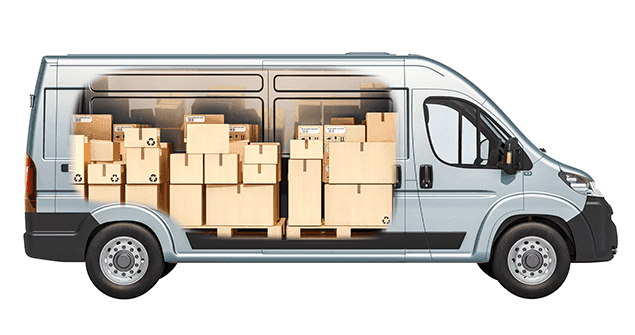
Anticipating Adverse Conditions
Potential adverse conditions that may affect the stability of the cargo must be taken into account prior to transport. Factors such as weather, terrain and traffic situation play an important role. An example is rainy days, when the risk of vehicle skidding increases. Proper load securing ensures that goods remain safe even in adverse conditions.
Taking external factors into account before transport begins can reduce the likelihood of incidents. The carrier should regularly check weather forecasts and update transport plans according to the situation. Measures such as additional straps or closures can increase cargo security. Experts recommend assessing road conditions before transport and making necessary adjustments.
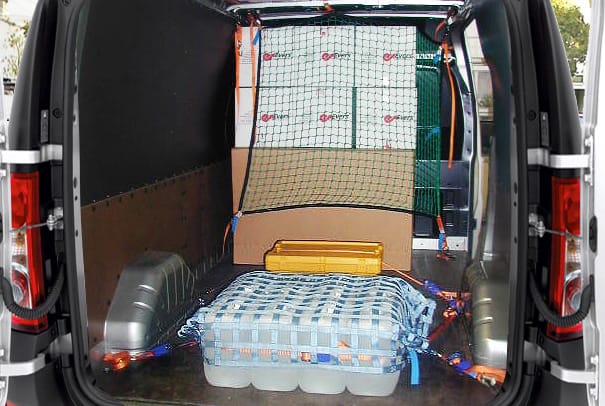
Cargo Fixing Techniques
Fixing techniques are essential for cargo protection. Different methods ensure stability and prevent the load from moving during travel. The method of securing should be tailored to the specific type of load.
The use of strong straps and fasteners minimises the risk of loose goods. Horizontal and vertical lashing rules ensure that heavy objects do not tip over. For example, heavy objects need to be fixed at an angle to reduce their tendency to move.
It is recommended to place goods close together to avoid gaps that increase the risk of instability. For loose loads, such as gravel or sand, it is advisable to use tarpaulins to cover them and prevent them from escaping.
Effective techniques also include locking devices such as friction pads and tensioning winches, which additionally increase stability. Technologies such as online tracking allow real-time alerts of transportation problems, contributing to safety. All these techniques ensure that the cargo reaches the customer in pristine condition.
Packing and Stowage of Cargo
Packing and stowage of cargo are key to safe transport in a van. Proper techniques reduce the risk of damage to goods and injuries in transit.
Packaging Best Practices

It is important to use appropriate materials when packing goods. Plastic or cardboard packaging is common for lightweight products, while heavy or fragile items require reinforced packaging such as wooden crates. In addition, it is recommended to use padding materials such as bubble wrap and foam pads to protect the goods from shocks.
When storing goods inside the packaging, care must be taken to minimise free space. The use of inflated fillers and foam elements helps to keep products stable, including those that are less resistant to external conditions such as temperature or humidity. Securing goods inside the packaging reduces movement and prevents damage.
The use of the correct fixings is essential. Straps and ropes should be strong enough for the load being secured, with experts recommending incorporating at least two lashings in different directions to prevent the goods from shifting or coming loose during travel.
Location of the Cargo in the Van
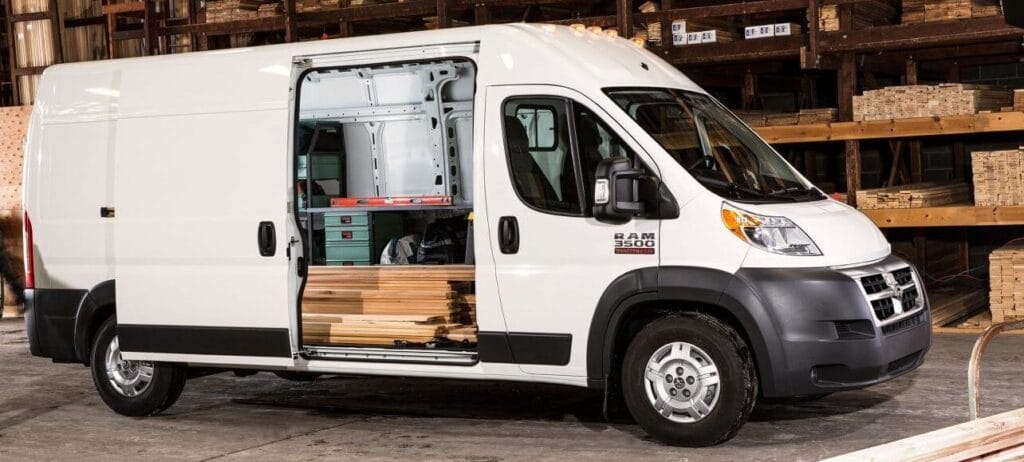
The location of the load plays an important role in the stability of the van. Goods should be distributed evenly, with heavier items placed at the bottom and closer to the centre of the vehicle. This will reduce the risk of tipping and ensure better vehicle handling on the road.
It is recommended to be sequential and systematic when loading the van. Start from the rear of the vehicle and work your way forward. Placing tall objects on the bottom helps to keep the centre of gravity low and stable.
Load balance control is important. After loading, the driver should make sure that the goods do not move and that all fastenings are tight and correctly positioned. Many modern vans are equipped with special load securing brackets and systems to increase the convenience and safety of transport.
Safety During Transport
Properly securing cargo during transport in a van is essential for the protection of goods and road safety. Various factors influence the requirements for securing, including the type of cargo being transported and the conditions during the journey.
Check Before Departure
A detailed inspection of the delivery must be carried out prior to commencement of transport. The check ensures that the vehicle has all the necessary means of transport. It must be verified that all securing devices are in good condition and suitable for the load. Experts also recommend checking the weight of the load to ensure that it does not exceed the maximum permissible gross vehicle weight. Weather conditions should also be considered before loading. For example, bad weather can affect the stability and safety of the load.
Ensuring favourable conditions for transport requires reasons for preparedness. When inspecting, it is necessary to be on the lookout for dangerous aspects such as loose objects and damaged equipment. Safe loading of cargo, as well as its efficient stowage, contributes to smooth and safe transport.
Troubleshooting During Transport
It is important to be prepared for unexpected problems during transport. Dealing with any complications during the journey requires an attentive response. For example, should the load become loose, the driver must immediately stop the vehicle in a safe place and re-secure the load.
In the event of hitting a bad road, it is necessary to adjust the ride. Experts advise the driver to check the load regularly during stops. Checking helps to detect any shifts and ensure they are adjusted. Effective monitoring of the condition of the load also entails informing passengers of potential risks.
If there are technical problems with your vehicle, it is extremely important to have the basic tools at hand. Having the right tools in the van can prevent serious cargo problems. Adhering to these principles helps ensure a smooth and safe transport process.
Conclusion
Properly securing cargo when transporting it in a van is key to protecting goods and keeping it safe on the road. Expert securing techniques and quality securing devices can significantly reduce the risk of damage and accidents. Taking the weight and dimensions of the load into account when folding and securing it is essential for stability during the journey.
Regular checking of the condition of the cargo and delivery before and during transport ensures smooth progress and minimises potential complications. Investing in quality equipment and adhering to best practices pays off, as safe transportation leads to customer satisfaction and investment protection.